Course assessment is an important criterion to determine the achievement of the students to improve the quality and effectiveness of the teaching and learning method using Course Learning Outcomes (CLOs). CLO’s measurement tools for quantitative analysis are used to get the student's achievements of knowledge and skill obtained from a particular course. Each course is analyzed using course learning outcomes and defined by the CLO target based on the course level. CLO’s weight in each assessment is calculated and max marks of CLO in each assessment are defined. Rating scale based on course level will be clarified for each course based on its level. The average of student achievements by assessment, and the average of CLO achievement by assessment are calculated. Student scores in each CLO based on the rating scale will be achieved. A Course Learning Outcomes (CLOs) are measurable results to improve the quality and effectiveness of the courses. This paper describes a tool for providing quantitative measurement of CLOs in assessing students’ achievement at higher learning colleges.
1. Introduction
Course Learning Outcomes (CLO) states the expected knowledge that the student is supposed to acquire at the end of the semester and outline according to the Bloom Taxonomy. A course in the first year of a program is likely to have a higher knowledge component and less emphasis on skills and competencies but as the student progresses through the program there is increased emphasis on how the student is able to use and apply the knowledge and develop associated skills and competencies.
2. Assessing Student Outcomes
To assess the students’ performance for the course at the end of the semester, each course is analyzed using course learning outcomes and defined by the CLO target based on the course level. CLOs weight in each assessment is calculated and max marks of CLO in each assessment are defined. Rating scale based on course level will be clarified for each course, based on its level. The average of student achievements and the average of CLO achievement by assessment are calculated. As a result, student scores in each CLO based on the rating scale will be achieved. Thus, the percentage of CLOs attainment in the course will be obtained. These steps are shown in Figure 1:
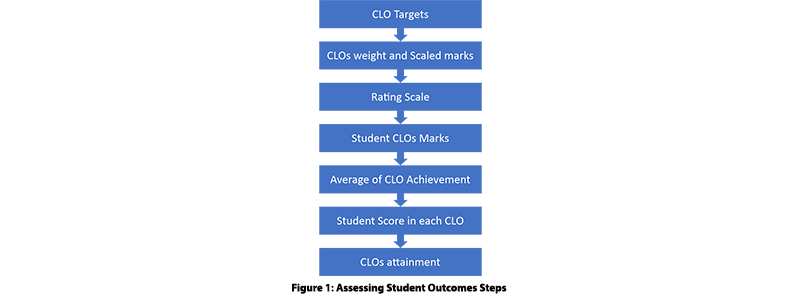
CLO target based on course level is defined. There are different levels of cognitive learning according to the Bloom's Taxonomy. These Taxonomies of educational objectives can be consulted as useful guides for developing a comprehensive list of student outcomes. Taxonomies attempt to identify and classify all different types of learning and then defines the level of performance for each domain. CLOs target based on course level can be defined as accomplishment requirement for each CLO category and CLOs attainments are defined based on the program. The CLOs weights and scaled marks are defined. The aspect of CLOs in the assessment will be defined to achieve the course level as shown in Figure. 2
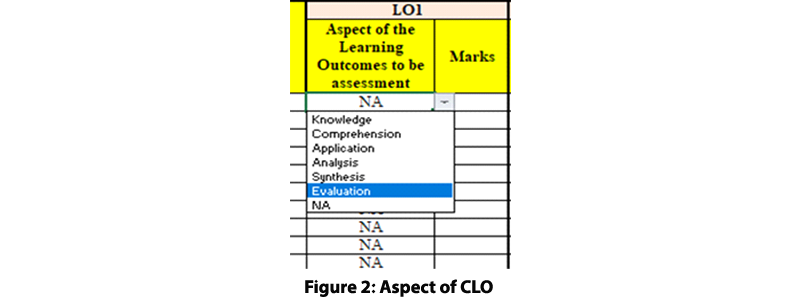
The CLOs’ score is calculated in each assessment. Max marks of CLO for each assessment are obtained. The CLO marks will be scaled as mentioned in the course syllabus. Rating Scale based on course level is defined by the course leader. Table. 1 shows an example of the rating scale for course level 2.
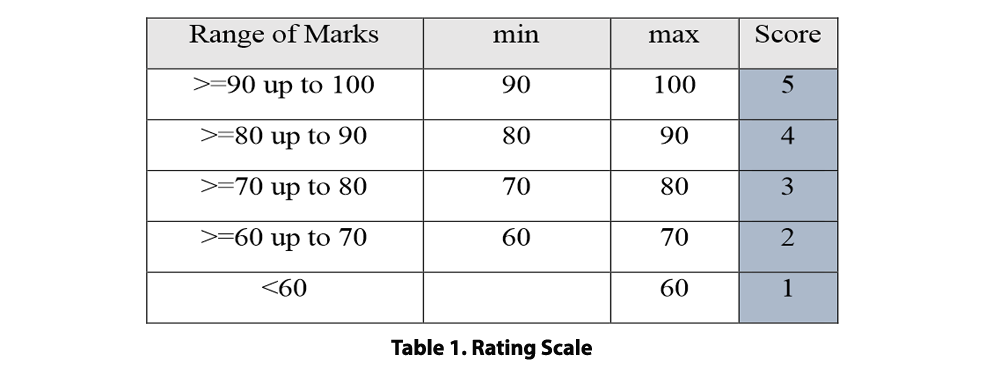
Course XX is taken in this article as a sample to assess the direct assessment of students’ performance. CLOs, assessments, CLO weights for this course are showed in the Table 2.
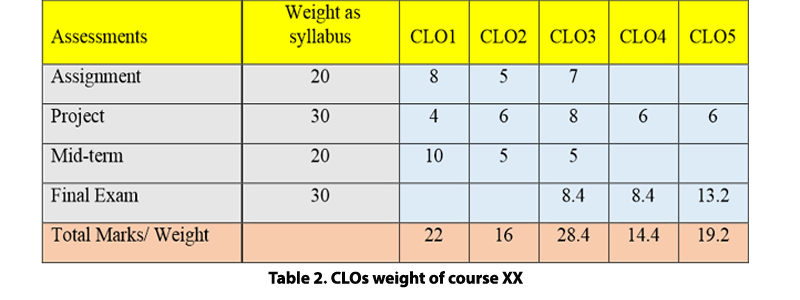
CLO target score chart for the course XX will be obtained as shown in the Figure 3.
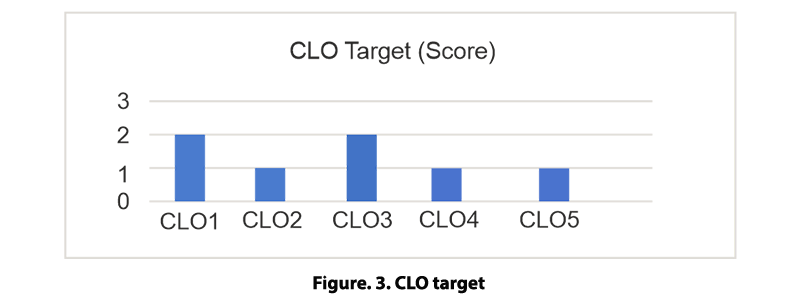
Student scores in each CLO based on the Rating Scale are shown in the Table 3:

Attainment levels are to be fixed based on what population of students score above the target mark for direct assessment. Student attainment in each CLO is shown in the Table 4.
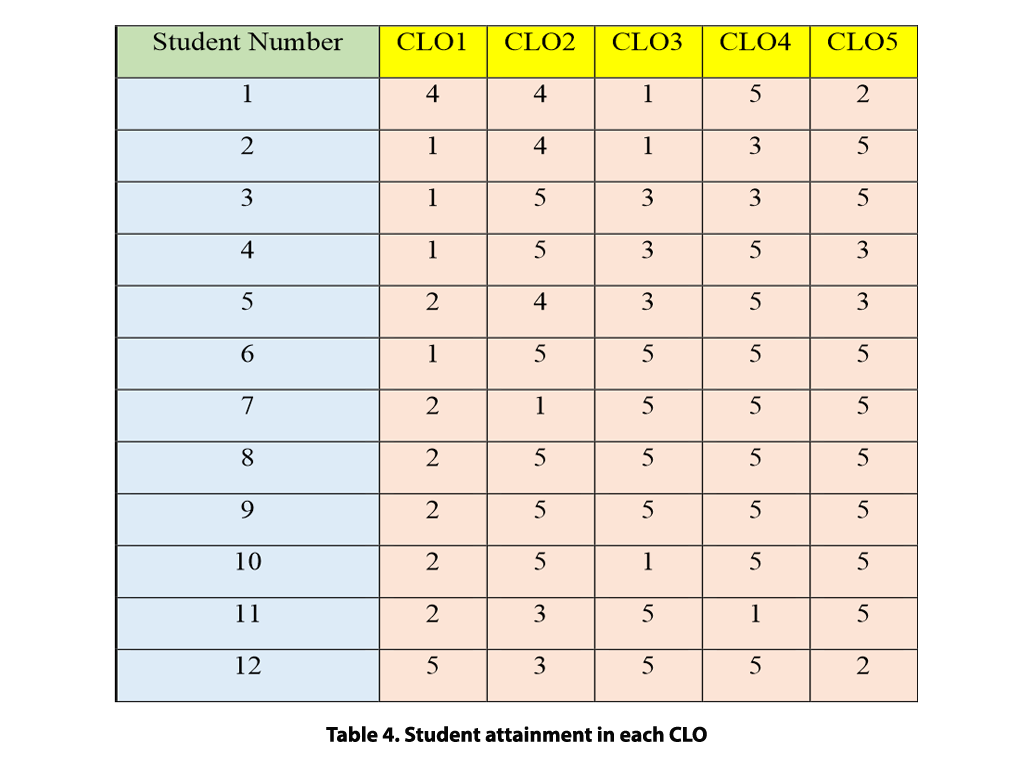
Final CLO attainment is shown in the Table 5.
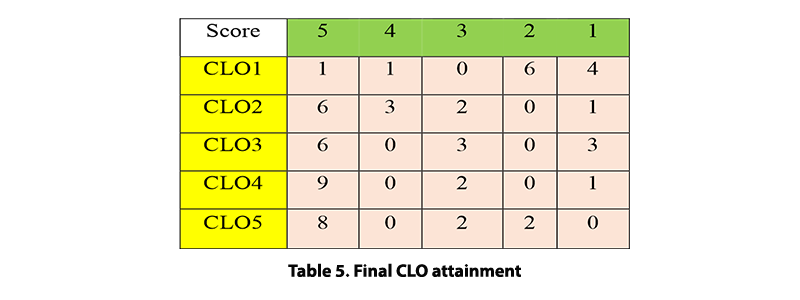
Table 6 shows students achievements measurement for the course XX. Results of this measurement are Average marks in each CLO, Students' CLO Status, CLO Target, Score Ave, CLO scale target, Target of the percentage of student numbers, and Percentage of CLO Attainment.
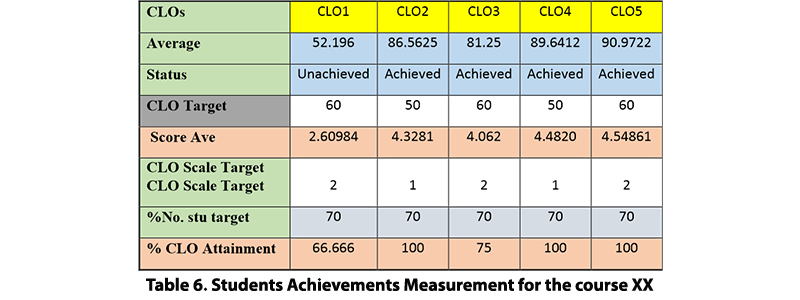
The overall result showed that CLO2, CLO3, CLO4, and CLO5 of course XX were achieved. The students failed to achieve CLO1 in this course where CLO1 attainment<70, also average of CLO1 marks <CLO Target.
CONCLUSION
This approach of measuring the achievement of a particular course learning outcome can provide, the learning outcome of students with regard to the courses they have failed to achieve. This measurement technique indicates whether a learning outcome has been achieved consistently by all assessment tools assigned to it. In addition, this measurement finds the attainment of a particular course learning outcome. Quantitative analysis tool for students’ achievements measurement aims to measure the effectiveness of the teaching and learning method by measuring the performance of the CLO, also guide the lecturer to monitor this performance leading towards improvements in the taught courses.
About the Author
Samar Mouti has 16 years of teaching experience in Syria and UAE. She is a program leader of IT Department at Khawarizmi International College, Abu Dhabi, UAE. Her research interest includes Artificial Intelligence techniques, Natural Language Processing, Expert Systems, and Neural Networks.